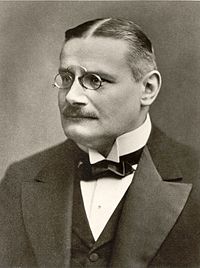The German Turfan expeditions were conducted between 1902 and 1914. The four expeditions to Turfan in Xinjiang, China, were initiated by Albert Grünwedel, a former director at the Ethnological Museum of Berlin, and organized by Albert von Le Coq. Theodor Bartus, who was a technical member of the museum staff and was in charge of extricating paintings found during the expeditions from cave walls and ruins, accompanied all four expeditions. Both expedition leaders. Grünwedel and Le Coq, returned to Berlin with thousands of paintings and other art objects, as well as more than 40,000 fragments of text. In 1902, the first research team financed largely by Friedrich Krupp, the arms manufacturer, left for Turfan and returned a year later with 46 crates full of treasures. Kaiser Wilhelm II was enthusiastic and helped finance the second expedition along with Krupp.[1] The third was financed by means of the Ministry of Culture. The fourth expedition under Le Coq was dogged by many difficulties and was finally cut short by the outbreak of World War I in 1914.[2]
Many important finds were made, especially on the second expedition, at a number of sites along the ancient northern route around the Taklamakan desert. They discovered important documents and works of art (including a magnificent wall-painting of a Manichaean bishop [mozhak], previously mistakenly identified as Mani[3]) and the remains of a Christian (Church of the East) church near ancient Khocho (Qara-khoja or Gaochang), a ruined ancient city, built of mud, 30 km (19 mi) east of Turfan.[4]
- ^ Hopkirk (1980), p. 114.
- ^ Hopkirk (1980), p. 207.
- ^ Gulácsi, Zsuzsanna (2008). "MANICHEAN ART". iranicaonline.org. Columbia University. Retrieved 5 January 2019.
This fragmentary wall-painting portrays the local Manichean community including a high-ranking elect, who is most likely the "Mozhak of the East" (the head of the community in the region, previously mistakenly identified as Mani), together with rows of male elects, female elects, and laypeople.
- ^ Hopkirk (1980), pp. 118, 122–123.

